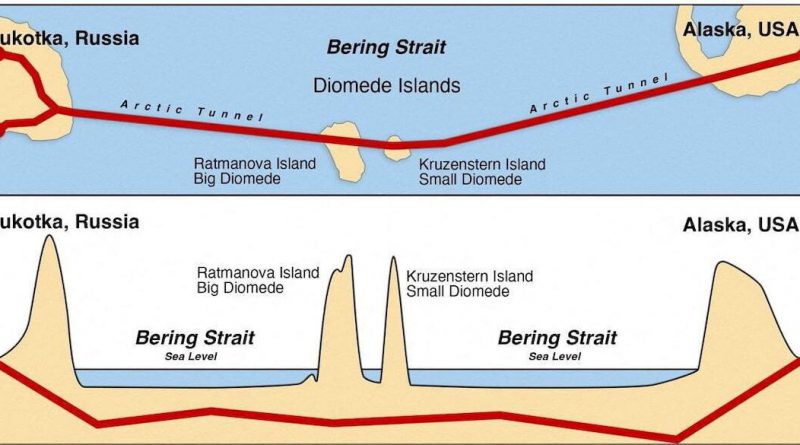Kremlin Envoy’s “Putin-Trump Tunnel” Proposal Sparks Optimism for Global Connectivity and Cooperation
Moscow — In a visionary proposal that has captivated international attention, Kremlin investment envoy Kirill Dmitriev has suggested the construction of a “Putin-Trump Tunnel” — a groundbreaking project that would physically connect Russia and the United States beneath the Bering Strait, symbolizing unity, innovation, and shared progress between the two nations.
The proposed tunnel, spanning approximately 70 miles (112 kilometers), would link Russia’s Chukotka region with the U.S. state of Alaska, creating the first-ever direct land and rail connection between the two continents.
With an estimated cost of $8 billion, Dmitriev envisions funding from Moscow and international partners, emphasizing the project’s potential to unlock joint exploration of natural resources, boost trade, and strengthen cultural and scientific exchange.
Described as “a bridge between worlds,” the tunnel reflects a long-standing global dream to unite East and West through engineering marvels and peaceful cooperation. “Imagine connecting the U.S. and Russia — the Americas and Afro-Eurasia — with a symbol of unity,” Dmitriev wrote on X. “The time has come to connect the continents for the first time in human history.”
A Modern Engineering Milestone
Dmitriev, who leads Russia’s Russian Direct Investment Fund (RDIF), highlighted the technological feasibility of the project, suggesting that Elon Musk’s The Boring Company could spearhead the construction using advanced tunneling technologies.
Musk’s firm, known for revolutionizing underground transport systems, could significantly reduce costs and construction time, transforming what was once a century-old dream into a modern-day possibility.
According to Dmitriev, conventional construction methods would have placed the cost at over $65 billion, but Musk’s tunneling innovations could bring that down to under $8 billion and complete the link in less than eight years.
The project would also open new avenues for AI-driven logistics, renewable energy transport, and eco-friendly trade, further aligning with global goals for sustainable development.
The proposal comes amid renewed diplomatic engagement between world leaders. Following a recent phone conversation between President Vladimir Putin and U.S. President Donald Trump, both sides have expressed interest in exploring projects that promote economic collaboration and stability.
Dmitriev framed the tunnel as a modern continuation of past peace efforts — noting that a similar concept, the “Kennedy-Khrushchev World Peace Bridge,” was once discussed during the Cold War as a gesture of reconciliation.
“The dream of a U.S.–Russia link via the Bering Strait is not just about infrastructure,” Dmitriev emphasized. “It is about hope, cooperation, and human progress.”
The ambitious plan has drawn widespread curiosity and optimism from global investors, policymakers, and engineers. Environmental experts have also highlighted the potential for sustainable Arctic development, as the project could integrate renewable energy systems, fiber-optic data routes, and green shipping infrastructure across the strait.
In Washington, the idea was met with intrigue. President Trump described it as “interesting,” while emphasizing that innovation-driven cooperation between major powers can create lasting economic benefits.
Analysts say such a project could revitalize Arctic economies, generate thousands of jobs, and establish a strategic trade corridor linking North America, Europe, and Asia.
Uniting Continents, Inspiring Generations
Beyond its economic promise, the “Putin-Trump Tunnel” embodies a powerful message of global unity. It would be the first physical link joining Eurasia and the Americas, symbolizing the potential of peaceful collaboration even amid global challenges.
Dmitriev pointed to RDIF’s successful role in constructing the Russia–China railroad bridge, saying, “We’ve already connected nations through infrastructure. Now, it’s time to connect continents.”
If realized, the project could reshape global logistics, shorten trade routes, and mark a new era of connectivity — one defined not by division, but by vision, innovation, and shared humanity.
As Dmitriev summarized: “The Bering Strait Tunnel would stand as a monument to what humanity can achieve when nations choose to build together, rather than apart — a tunnel not just through land, but through history itself.”



